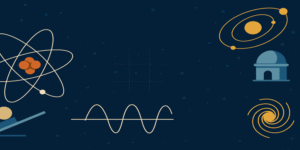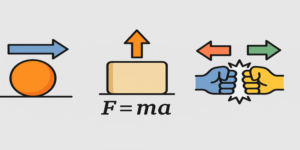The concept of happiness has been a central theme in psychology and neuroscience, often discussed in terms of neurotransmitters, which are chemical messengers in the brain. These neurotransmitters regulate mood, motivation, pleasure, and social bonding. Among the most significant of these are endorphins, dopamine, serotonin, and oxytocin, each playing a distinct role in human emotional well-being. This article explores how these chemicals influence happiness and how we can activate them through everyday activities and natural supplements.
1.0 Endorphins: The Body’s Natural Painkillers
Endorphins are the body’s natural painkillers, often released during periods of physical stress or discomfort, such as exercise or laughter. Endorphins act similarly to opiates, helping to reduce pain and produce feelings of pleasure (Schultheiss & Wirth, 2020). They are particularly important in the “runner’s high” experienced during prolonged periods of physical exertion.
To access endorphins, regular exercise and activities that provoke laughter can be highly effective. Laughter has been shown to increase the release of endorphins, contributing to a greater sense of overall well-being (Dunbar, 2012). Herbal supplements like Rhodiola, Ashwagandha, and Turmeric are also considered natural boosters for endorphin production (Singh et al., 2011).
2.0 Dopamine: The Motivation Molecule
Dopamine is a critical player in the brain’s reward system. It is closely linked to motivation, pleasure, and learning. Dopamine levels rise when we achieve goals or experience something enjoyable, such as listening to music (Wise & Robble, 2020). A well-balanced dopamine system can lead to feelings of satisfaction and enhanced focus, making it easier to pursue long-term goals.
Activities such as achieving small daily tasks, setting and completing goals, and enjoying music have been shown to increase dopamine levels (Schultz, 2016). Herbal supplements such as Mucuna Pruriens and Ginkgo Biloba are commonly used to support dopamine production (López et al., 2013).
3.0 Serotonin: The Mood Stabiliser
Serotonin is often called the mood stabiliser, as it contributes to well-being, joy, and a sense of inner peace. It regulates various physiological functions, including mood, appetite, and sleep. Low serotonin levels are associated with depression and anxiety (Young, 2007). Serotonin’s role in maintaining a balanced emotional state is so significant that many antidepressants, such as selective serotonin reuptake inhibitors (SSRIs), are designed to increase serotonin levels.
There are natural ways to boost serotonin production, including exposure to sunlight, mindfulness practices, and meditation (Young & Leyton, 2002). Spending time outdoors, particularly in sunlight, encourages serotonin synthesis due to the influence of ultraviolet light on the skin (Lambert et al., 2002). St. John’s Wort and Saffron are among the herbal supplements widely recognised for their ability to enhance serotonin levels (Akhondzadeh et al., 2004).
4.0 Oxytocin: The Love Hormone
Oxytocin, commonly referred to as the “love hormone”, plays a pivotal role in social bonding and emotional intimacy. It is released in response to physical touch, such as hugging or holding hands, and during acts of kindness. This hormone fosters feelings of connection and trust, making it essential for healthy relationships and social interactions (Carter, 2014).
Engaging in physical touch and expressing kindness towards others are powerful ways to stimulate the release of oxytocin. Oxytocin not only strengthens interpersonal bonds but also reduces stress and promotes overall well-being (Feldman, 2012). Herbal supplements like Damiana and Rose are believed to support oxytocin release and have long been used in traditional medicine to enhance emotional connectivity (Hoffman, 2003).
Understanding how the brain’s happiness chemical’s function can provide valuable insights into how we can naturally enhance our well-being. Endorphins, dopamine, serotonin, and oxytocin each play unique roles in regulating mood, motivation, and social bonds. By engaging in activities that stimulate these neurotransmitters—such as exercise, goal setting, mindfulness, and acts of kindness—we can take control of our emotional health and happiness. Moreover, certain herbal supplements may support the production and effectiveness of these chemicals, offering a holistic approach to mental wellness.
References:
Akhondzadeh, S., Tahmacebi-Pour, N., Noorbala, A.A., Amini, H., Fallah-Pour, H., Jamshidi, A.H. and Khani, M. (2004) “The Treatment of Mild to Moderate Depression: A Double-Blind, Randomised and Placebo-Controlled Trial”. Phytotherapy Research: An International Journal Devoted to Pharmacological and Toxicological Evaluation of Natural Product Derivatives. 19(2), pp.148-151.
Carter, C.S. (2014) “Oxytocin Pathways and the Evolution of Human Behavior”. Annual Review of Psychology. 65, pp.17-39.
Dunbar, R.I. (2012) “Bridging the Bonding Gap: The Transition from Primates to Humans”. Philosophical Transactions of the Royal Society B: Biological Sciences. 367(1597), pp.1837-1846.
Feldman, R. (2012) “Oxytocin and Social Affiliation in Humans”. Hormones and Behavior. 61(3), pp.380-391.
Hoffman, D.L. (2003) Medical Herbalism: The Science and Practice of Herbal Medicine. Bear & Co.
Lambert, G.W., Reid, C., Kaye, D.M., Jennings, G.L. and Esler, M.D. (2002) “Effect of Sunlight and Season on Serotonin Turnover in The Brain”. The Lancet. 360(9348), pp.1840-1842.
López, V., Martos, N., Nogués, M.R., Ferrando, M.D. and Gómez, M. (2013) “Acute and Subacute Toxicity Evaluation of a Mucuna Pruriens (L.) DC Seed Extract”. Journal of Ethnopharmacology. 147(2), pp.453-460.
Schultheiss, O.C. and Wirth, M.M. (2020) Endorphins and the mood-motivation continuum. In The Cambridge Handbook of Substance and Behavioral Addictions (pp. 55-71). Cambridge University Press.
Schultz, W. (2016) “Dopamine Reward Prediction Error Coding”. Dialogues in Clinical Neuroscience. 18(1), p.23.
Singh, R., Chander, V. and Chopra, B. (2011) “Rhodiola: Evaluation of Natural Adaptogen for Stress-Induced Cytoprotective Function”. Asian Pacific Journal of Tropical Biomedicine. 1(1), pp.101-108.
Wise, R.A. and Robble, M.A. (2020) “Dopamine and Addiction”. Annual Review of Psychology. 71, pp.79-106.
Young, S.N. (2007) “How to Increase Serotonin in the Human Brain Without Drugs”. Journal of Psychiatry & Neuroscience. 32(6), p.394.
Young, S.N. and Leyton, M. (2002) “The Role of Serotonin in Human Mood and Social Interaction”. Insights from altered tryptophan levels. 10(5), pp.474-486.









